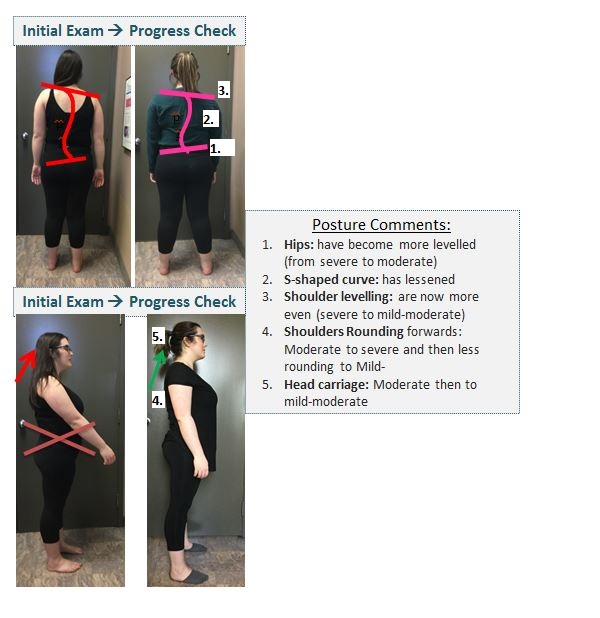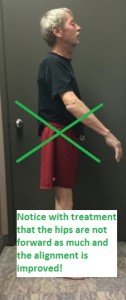Read on about this month’s topic of Upper and Lower Crossed Syndrome: also known as Forward Neck-Rounded shoulders and a straight back and shifted hips!
What are the characteristics of cross syndromes?
Observe how the head is positioned way forward, with the centre of gravity line significantly behind the ear (rather than straight through it). This will cause a great deal of activity in the upper back muscles, which try to maintain neutrality of head position. Observe how the chest is sunken, which will eventually influence respiratory function. Notice further that the shoulders will have rolled forward due to tight chest muscles, exposing the lower back to increased strain. The Pelvis has rolled forward in response to tight hip flexor muscles, which results in a protruding and weak abdomen as well as a weakened backside and hamstring region. The front of the thigh is tight, as are the calf muscles, resulting in knee joint strain; while the shin muscles are weak with the feet allowed to roll inward (pronation) resulting in flat footedness and knocked-knees.
The lines on the hips represent typical weak and opposing hyperactive-contracted muscle groups, and you will notice how they establish the illustrated “Cross” syndromes in both the lower and upper back regions. In fact there are several more possible “Cross” syndromes involving the lower leg, upper neck, jaw and arm regions, all related to the effects of our sedentary lifestyles and the effects of reflexive inhibition of particular groups of muscles.
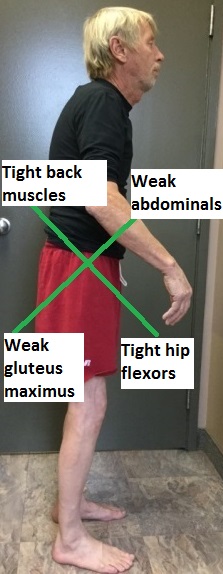
Below are some of the common health problems that can arise from chronic Upper and Lower Cross syndromes:
- Trigger Points and fibromyalgia
- Ache or burning in the shoulders
- Pins and needles, or other referred symptoms into the arms and hands
- Rotator cuff strains and other shoulder problems
- Breathing disturbances including Asthma
- Emotional and psychological conditions such as depression
- Migraines and tension headaches
- Digestive disturbances, bowel problems, kidney and menstrual dysfunction due to circulation failures
- Allergies and weak immune function, such as Candida infections etc.
What can be done about it?
As you might imagine, one of the aims of treating such conditions would be to try and balance some of the opposing muscle groups and tight or restricted joints/bones.
Upper Cross Syndrome
Upper Cross Syndrome is often caused by chronic bad posture, is signified by rounded shoulders, head in front of the body and an apparent curve in the neck and upper back. As a result, the pectoral and neck muscles tighten and the neck, shoulder, and upper back joints become restricted.
The culprits are the trapezius and levator scapula (which help raise and lower the shoulder blades), the pectoralis major and minor (in your chest), and the sternocleidomastoid (the bulging muscles along the side of your neck).
- Stretch the pectoral muscles
- Stretch the upper back muscles
- Strengthen the middle back
- Strengthen the rear shoulder muscles
For more Upper Cross Syndrome stretches, please visit this link.
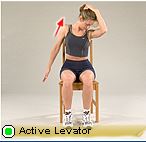
Lower Cross Syndrome
Lower Cross Syndrome is an imbalance of tight and weak structures around the pelvis, hips, and lower back. This imbalance can cause pain and dysfunction and an over-arching of the lower back. Lower crossed syndrome (also referred to as distal or pelvic cross syndrome) is a combination of weak glutes, weak abdominals, tight hip flexors, and a tight lower back.
Causes include:
- Prolonged sitting, particularly with bad posture
- Physical inactivity
- Regular performance of sports and activities that involve an uneven stimulation of the muscles that are involved in LCS
- Poor exercise technique (e.g., lumbar hyperextension in the deadlift, press, and squat).
- Imbalanced strength training (e.g., a lot more lower back and/or hip flexor training than glute and/or abdominal training)
- Genetic predispositions
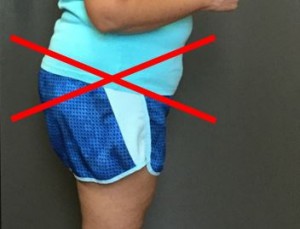
The development of LCS initiates a vicious cycle. Because the gluteals and abdominals are weak, their function is compromised, and other muscles such as the hamstrings and lower back muscles are recruited to assist them in performing activities such as walking, running, and squatting. This leads to overuse and tightness of the hamstrings and lower back muscles, and a further weakening of the abdominals and gluteals.
Common signs and symptoms
- Anterior Pelvic Tilt (APT). While a certain degree of APT is perfectly normal – and usually unproblematic – excessive APT leads to poor exercise technique and increased risk of knee pain, lower back pain/injuries, and other musculoskeletal disorders that run rampant in the modern world.
- Increased lower back curve (sway back)
- “Bulging” (not necessarily fat) abdomen
- Knee hyperextension
- Lower back pain (2, 3)
- Poor exercise technique. Individuals with LCS typically display poor movement patterns in exercises such as the squat and deadlift. This pattern is characterized by overextension of the lumbar spine, lack of glute involvement, and quad and low-back dominance.
These signs and symptoms, in combination with a screening that reveals stiff hip flexors, poor glute and abdominal strength, and compensation patterns, are good indicators of LCS.
- Strengthen the gluteal muscles
- Strengthen the abdominal muscles
- Strengthen the hamstrings
- Stretch the hip flexor muscles
- Stretch the quadriceps muscles (front of the thigh)
- Stretch the calf muscles
- Stretch the low back muscles
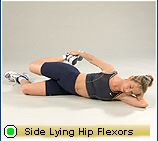
For more stretches for Lower Cross Syndrome, https://www.back2health4you.com/2017/08/cross-syndrome-stretches/
It’s important to be aware of and able to correct muscle and joint imbalance patterns, as they set the stage for poor exercise technique, compensation patterns, injuries, neck, shoulder, upper back, lower back, hip, knee and foot discomfort/tightness/pain, impaired physical performance, and in some cases, disorders such as osteoarthritis and degenerative joint disease. Moreover, poor posture generally isn’t aesthetically appealing.
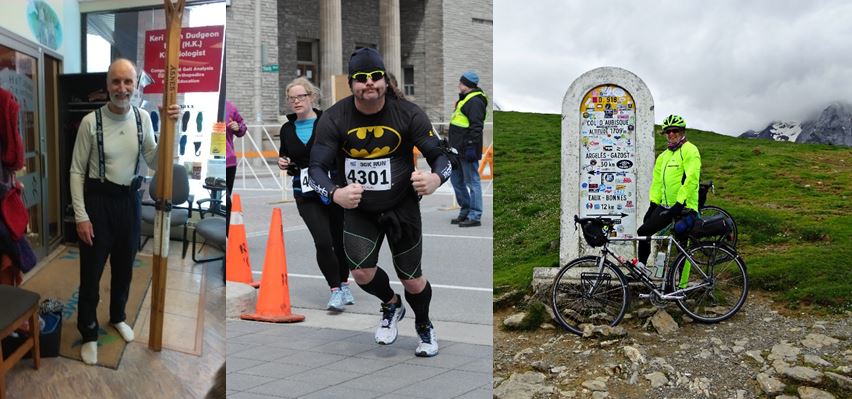
Exercises and mobility drills are aimed at treating Upper Cross Syndrome and Lower Cross Syndrome may improve your physical appearance, as they will help you achieve a better posture!
Just look at the results of these two patients…….They are living proof!
Often, both Lower and Upper Cross Syndrome can work together. For example, the glutes can become so weak and the hip flexors so tight that the pelvis becomes rotated. A rotated pelvis can contribute to worsening posture for the upper body, which even further stretches mid-back muscles and tightens the pectoral neck muscles.
